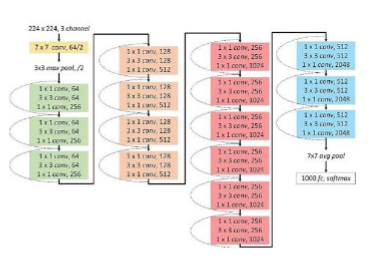Age Identification Through Facial Images Using Gabor Filter and Convolutional Neural Network (CNN)
Keywords:
Age estimation, Computer Vision, CNN, Deep Learning, Face Recognition, Gabor filterAbstract
Age prediction plays a very important role in helping prevent document falsification, identity fraud, age theft cases or other crimes. This research uses CNN to predict age, because CNN has a better performance in facial recognition. Then, the researcher also changed the filter in CNN using a Gabor filter to extract facial features to predict age. The Gabor filter method is often used in texture analysis because it is effective in recognizing patterns. Therefore, the Gabor filter method is known as a successful feature detector because it has the ability to eliminate facial variability. This research uses 8 types of experiments (CNN model only or a combination of CNN and Gabor filters) by comparing 4 types of CNN architecture, namely Standard CNN, VGG16, VGG19 and ResNet50. The best accuracy results are obtained from the VGG19 model which has an MAE value of 5.8235 with an execution time of 15 minutes 24 seconds. While the lowest computation time is obtained from the VGG16+Gabor model which is 7 minutes 4 seconds. Of the eight experiments that have been carried out, the Gabor filter has the advantage that it always has a lower computation time so that the Gabor filter is proven to be more efficient in predicting the age.
Downloads
References
W. Liu, L. Chen, and Y. Chen, “Age Classification Using Convolutional Neural Networks with the Multi-class Focal Loss,” in IOP Conference Series: Materials Science and Engineering, Oct. 2018, vol. 428, no. 1. doi: 10.1088/1757-899X/428/1/012043.
H. Tin, “Subjective Age Prediction of Face Images Using PCA,” International Journal of Information and Electronics Engineering, 2012, doi: 10.7763/ijiee.2012.v2.102.
K. Ito, H. Kawai, T. Okano, and T. Aoki, “Age and Gender Prediction from Face Images Using Convolutional Neural Network,” in Asia-Pacific Signal and Information Processing Association APSIPA) Proceedings, Nov. 2018, pp. 1–11.
A. M. Abu. Nada, Eman. Alajrami, A. A. A. l-Saqqa, and S. S. Abu-Naser, “Face detection in color images,” IEEE Trans Pattern Anal Mach Intell, vol. 4, no. 8, pp. 21–24, May 2020, doi: 10.1109/34.1000242.
A. N. Rohmah, D. Putra Pamungkas, and A. B. Setiawan, “Implementasi Ekstraksi Ciri Filter Gabor Dan Ann Dalam Klasifikasi Citra Wajah,” 2021.
H. el Khiyari and H. Wechsler, “Age Invariant Face Recognition Using Convolutional Neural Networks and Set Distances,” Journal of Information Security, vol. 08, no. 03, pp. 174–185, 2017, doi: 10.4236/jis.2017.83012.
A. Syarif, A. R. Tanjung, R. Andrian dan, and F. R. Lumbanraja, “Implementasi Metode Ekstraksi Fitur Gabor Filter dan Probablity Neural Network (PNN) untuk Identifikasi Kain Tapis Lampung,” Jurnal Komputasi, vol. 8, no. 2, 2020.
Lussiana ETP, S. Widodo, and D. A. Pambayun, “Penerapan Filter Gabor untuk Analisis Tekstur Citra Mammogram,” Seminar Nasional Aplikasi Teknologi Informasi, pp. 17–18, 2011.
B. Muharom, H. Hidayat, and R. E. Putra, “Penerapan CNN dengan Filter Gabor sebagai feature extractor untuk Content-Based Image Retrieval,” 2019.
A. Dhomne, R. Kumar, and V. Bhan, “Gender Recognition Through Face Using Deep Learning,” in Procedia Computer Science, 2018, vol. 132, pp. 2–10. doi: 10.1016/j.procs.2018.05.053.

Downloads
Published
How to Cite
Issue
Section
License

This work is licensed under a Creative Commons Attribution-ShareAlike 4.0 International License.
All papers should be submitted electronically. All submitted manuscripts must be original work that is not under submission at another journal or under consideration for publication in another form, such as a monograph or chapter of a book. Authors of submitted papers are obligated not to submit their paper for publication elsewhere until an editorial decision is rendered on their submission. Further, authors of accepted papers are prohibited from publishing the results in other publications that appear before the paper is published in the Journal unless they receive approval for doing so from the Editor-In-Chief.
IJISAE open access articles are licensed under a Creative Commons Attribution-ShareAlike 4.0 International License. This license lets the audience to give appropriate credit, provide a link to the license, and indicate if changes were made and if they remix, transform, or build upon the material, they must distribute contributions under the same license as the original.





